The Seeds of Christianity: The Hellenization of Judaism
Two of the most influential Greek philosophical traditions in antiquity, in both the Hellenic period as well as the period of Roman influence and domination, were Stoicism and Epicureanism, the former of which exerted considerable influence on early Christian theology, which in turn was influenced by Jewish theological development during the same time, most notably seen in the work of Philo of Alexandria. The Stoic and Epicurean philosophical systems survive down to us in fragments and pieces for the most part, in contrast to the more complete philosophical systems and works that survive down to us from the Platonic and Peripatetic (Aristotle) schools. For example, the (Middle) Platonic philosopher and historian Plutarch from the 2nd century CE, who incidentally was also a priest at Delphi, wrote a quite few works that criticize Stoicism from which we gain important insights into its underlying philosophy. We also find material related to Stoicism and Epicureanism in the works of the philosophical biographer Diogenes Laertius from the third century CE who was the author of Lives of Eminent Philosophers, a comprehensive treatise which included extensive autobiographical as well as philosophical summaries of virtually all of the major ancient Greek philosophers and schools – Stoic, Platonic and Epicurean being three schools which he covers in great detail.
One cannot ignore the underlying socio-political context which drove these philosophical, really scientific, developments. With the advent of first the Persian Empire and then the Macedonian Empire in the middle and latter half of the first millennium BCE, we see the lines of communication, exchange and trade routes open up which bridged the ancient populations of the Macedonians, the Romans, the Greeks, the Egyptians, the Chaldeans (Palestine and Israel region today) and of course the Persians.[1] The cultural and philosophical epicenters of these developments were, as they are today, forged in urban centers of learning, most notably of course first in Athens, then in Alexandria in northern Egypt, and then in turn in Rome as the Roman and Latin culture began to dominate the intellectual landscape in the first few centuries CE.
Alexandria in particular saw the development of profound intellectual and philosophical development, where most if not all of the most influential ancient philosophers and theologians lived and studied to a large extent between the second century BCE and the second century CE. This was of course the home of the great Library of Alexandria, perhaps the greatest legacy of Alexander, and the place where the Hebrew Old Testament was translated into Greek, the famed Septuagint (or simply LXX), and where early Christianity first took shape as reflected in the works the esteemed Jewish philosopher Philo of Alexandria (also known as Philo Judaeus) who lived and wrote around the time of Christ, Clement of Alexandria who wrote and taught in the 2nd and third centuries CE, and Origen also of Alexandria who is believed to have studied with and was greatly influenced by Clement. Clement and Origin were some of the first Christian theologians to interpret the Gospels in light of the Hellenic philosophical tradition, building on the work of Philo who had analyzed and encapsulated Old Testament wisdom in the light of Hellenic philosophy.
This period represented a melting pot of theological dialogue and development, perhaps best described as the enlightenment era of philosophy in antiquity and it is no accident that it is from this period that perhaps the greatest religious figure in the history of mankind emerges, Jesus of Nazareth. It was a time when all of the significant religious traditions (philosophy) of the Mediterranean, Near East and Egypt were assimilated by some of the best minds in antiquity, an assimilation that occurred at the same time as advanced civilization was starting to blossom, and language and writing – and the existence of extensive libraries – began to manifest in the ancient world, giving philosophers and historians alike access to broad expanses of knowledge across an extensive cultural landscape, granting a perspective on history and theology, and science which at that time encompassed theology, that was unmatched in all of mankind’s history up to that point. Perhaps it’s not too much of an exaggeration to say that it was a time when Reason began to take prominence over ritual and myth as the predominant determining factor that shaped religious thought, where all knowledge was looked upon as a single system and body of work that must hang together cohesively, and where ethics was considered a branch of science just as important as physics. This is the legacy of the ancient Greeks to the West.
The philosophers of this era looked upon the mythology of the ancient peoples, their cosmologies that were wrapped in fable and epic poetry, as allegories for the ascent of the Soul, not as true stories that explained the inner workings of Nature as some modern historians would have us believe. This was the “secret” that was kept by the priests of the major sects of the ancient world, with whom the philosophers studied, and what they attempted to encapsulate and describe in whatever form they deemed most appropriate. Plato wrote in a form of literary prose know as Socratic Dialogue, hiding more abstract and esoteric teachings to a large extent perhaps because he was concerned the same fate of Socrates might befall him or perhaps because he thought that the ancient wisdom he was trying to convey was most appropriately done wrapped in allegory and dialectic so that the wisdom and elegance of the teaching, which he believed was beyond words, could be conveyed as best as possible. Aristotle was more direct in his approach, more scientific to the modern reader, and perhaps because of this not terribly popular to the everyday man in antiquity that still had an appreciation for myth and allegory – at least certainly not as popular as the Stoic and Epicurean schools which had significant followings in the aristocracy and the middle class of antiquity respectively[2].
With the proliferation of Hellenic philosophy in classical (Western) antiquity from the 3rd century BCE to the first few centuries after the death of Jesus and the advent of early Christianity, the most prominent theo-philosophical systems in the Mediterranean are (primarily) Middle Platonism and Stoicism, both of which inform early Christianity in many respects – in the canonical Gospels in particular which show clear Hellenic philosophical influence not surprisingly. In this period of theological history in the generations following the death of Christ, the focus turns toward interpretation of these books which stemmed from the tradition surrounding Jesus’s life and teachings from which the New Testament canon was constructed by the early Church, as well as in turn the Old Testament to which the early Christians turned for their legitimacy and historicity, within the context of the firmly established Hellenic philosophical tradition which had been adopted by the intellectual and academic community of the Greco-Roman world.
In the works of the early Christian apologists and theologians, we find the exploration of the notion of good and evil, fate versus free will, salvation, the meaning of Christ and his resurrection, the role of wisdom and law, etc. as reflected in the Old Testament canon and the New Testament books all within the philosophical and metaphysical framework of the Hellenic tradition that preceded it. In these early phases of Christianity, before the doctrine of the Trinity is established in fact, the role of reason, what the early philosophers referred to in the abstract as Logos, begins to be interpreted as a sort of hand of God so to speak. Only later, as the doctrine of the Trinity becomes more mature and is firmly established in Christian orthodoxy, is Christ himself looked upon as a manifestation of this Logos in human form. This is the so-called “Word of God” who becomes “flesh” in the Gospel of John (which was written in Greek of course as were all the Gospels).
1 In the beginning was the Word, and the Word was with God, and the Word was God.
2 The same was in the beginning with God.
3 All things were made by him; and without him was not any thing made that was made.
4 In him was life; and the life was the light of men.
5 And the light shineth in darkness; and the darkness comprehended it not.
6 There was a man sent from God, whose name was John.
7 The same came for a witness, to bear witness of the Light, that all men through him might believe.
8 He was not that Light, but was sent to bear witness of that Light.
9 That was the true Light, which lighteth every man that cometh into the world.
10 He was in the world, and the world was made by him, and the world knew him not.
11 He came unto his own, and his own received him not.
12 But as many as received him, to them gave he power to become the sons of God, even to them that believe on his name:
13 Which were born, not of blood, nor of the will of the flesh, nor of the will of man, but of God.
14 And the Word was made flesh, and dwelt among us, (and we beheld his glory, the glory as of the only begotten of the Father,) full of grace and truth.
15 John bare witness of him, and cried, saying, This was he of whom I spake, He that cometh after me is preferred before me: for he was before me.
16 And of his fulness have all we received, and grace for grace.
17 For the law was given by Moses, but grace and truth came by Jesus Christ.
18 No man hath seen God at any time, the only begotten Son, which is in the bosom of the Father, he hath declared him.[3]
In these 18 initial verses of John, sometimes referred to collectively as the “Prologue”, we find perhaps more so than in any other place in the New Testament – in particular in the first few verses – this Hellenic philosophical interpretation of the meaning of (the Jewish) Christ as interpreted via the Logos, i.e. the “Word”.
In this oft quoted passage, we see here not only very close references and analogues to Genesis[4], but also a classically Stoic, or perhaps better put a classically Hellenic philosophical interpretation of the birth and teachings of Jesus, ignoring the reference to John the Baptist which plays a central role here clearly in John’s conception of setting the stage for the tale of the life of Jesus. The Gospels of Matthew, Mark and Luke are known collectively as the “Synoptic Gospels” because they share many of the same characteristics and story line, but the Gospel of John, sometimes called the “Gnostic Gospel”, is unique in its conception and interpretation of the life and teachings of Jesus, drawing insights from the more esoteric and mystical traditions surrounding early Christian followers, schools which were categorized as “Gnostic” by the early Christian Church Fathers and apologists and schools which drew inspiration from the Hellenic philosophical tradition, the Platonic school most notably.
Within the context of later Christian theological development, we see a clear shift away from the view of the supremacy of reason over God, and a focus more on salvation through Christ. The tradition almost inverts the priority with the doctrine of the Trinity, where reason is not the pinnacle of metaphysics as it is in the Neo-Platonic tradition quite explicitly and in the Peripatetic tradition implicitly, but reason , again Logos or what has come to be known as the “Word”, is looked upon as a medium through which the power of the Trinity moves through man, and is personified in the Son of God, Jesus, who is the one and only savior of mankind.
In exploring this notion of what has come down to us as the “Word” in New Testament and Christian canon and theology, and its place within the tripartite theology of the Christians (the Trinity), it’s important to have a clear notion as to the history and context of the term as it used by the author of John, and its meaning within the philosophical community from within which it emerges in the first few centuries after Christ, particularly in the Gnostic tradition which was shunned by later Christians as heretical but which exerted at least some influence over early Christian theological development, even if only as a point of reference for its critics.[5]
Perhaps the most fleshed out philosophical notion of Logos in the Judeo-Christian tradition can be found in the work of Philo of Alexandria (c.20 BCE – 40CE), aka Philo Judaeus, a Jewish philosopher who synthesized the tradition of Moses as reflected in the Old Testament directly into the Hellenic philosophical tradition, landing on the idea of Logos as one of the core theological and philosophical principles upon which his theological scheme rested, a scheme which placed Moses as the most revered and esteemed of all philosophers in antiquity. Interestingly, Philo’s works were mainly conserved in the Christian theological tradition despite his Jewish heritage and that the main thrust of his teachings were the legitimization and synthesis of the teachings of Moses (Pentateuch) into Hellenic philosophy, even going so far as to suggest that the Greek philosophical tradition borrowed from the Jewish sage rather than emerging independently.
Philo’s work can be roughly categorized between his Old Testament exegesis and commentary and his more philosophical treatises that dealt with more classical philosophical problems such as ethics, of the problem of Free Will, the nature of the soul, etc. A good summary of his doctrine of Logos and its influence on subsequent Christian theological development can be found in the Internet Encyclopedia of Philosophy entry on Philo:
The pivotal and the most developed doctrine in Philo’s writings on which hinges his entire philosophical system, is his doctrine of the Logos. By developing this doctrine he fused Greek philosophical concepts with Hebrew religious thought and provided the foundation for Christianity, first in the development of the Christian Pauline myth and speculations of John, later in the Hellenic Christian Logos and Gnostic doctrines of the second century. All other doctrines of Philo hinge on his interpretation of divine existence and action….
In the Septuagint version of the Old Testament the term logos (Hebrew davar) was used frequently to describe God’s utterances (Gen. 1:3, 6,9; 3:9,11; Ps. 32:9), God’s action (Zech. 5:1-4; Ps. 106:20; Ps. 147:15), and messages of prophets by means of which God communicated his will to his people (Jer. 1:4-19, 2:1-7; Ezek. 1:3; Amos 3:1). Logos is used here only as a figure of speech designating God’s activity or action. …
The Greek, metaphysical concept of the Logos is in sharp contrast to the concept of a personal God described in anthropomorphic terms typical of Hebrew thought. Philo made a synthesis of the two systems and attempted to explain Hebrew thought in terms of Greek philosophy by introducing the Stoic concept of the Logos into Judaism. In the process the Logos became transformed from a metaphysical entity into an extension of a divine and transcendental anthropomorphic being and mediator between God and men. Philo offered various descriptions of the Logos.[6]
The general academic and scholarly consensus appears to be that Philo’s philosophical and allegorical (allegoresis) work is not necessarily innovative in and of itself per se, but more reflects the current thinking among Jewish scholars in his day. But it is Philo’s work that survived however, again preserved primarily through the early Christian theological and philosophical tradition which leaned on Philo to establish the wisdom and authenticity of the Old Testament within the context of the Hellenic philosophical tradition which was the dominant intellectual current of the time.
Philo Judaeus was a product of the intellectual melting pot of Alexandria which we know had strong ties to Hellenic philosophy, his writings show clear signs of this. But at the same time, Philo is first and foremost a Jewish scholar. His work is an exegesis of Jewish tradition, mythology and history in the light of Hellenic philosophy which was considered to be the intellectual benchmark of the times. His work to a large extent is meant to establish Moses as one of the great philosophers of antiquity and his allegorical interpretation of Genesis for example follows the lines of the Greek philosophic tradition of interpreting mythology allegorically, referred to in the academic literature as allegoresis, a tradition that was well established by the time of Philo.
With Philo Judaeus we do have a significant break from the more orthodox Jewish interpretation of the Old Testament however. This ancient Jewish theological and historical narrative is captured in the (Hebrew) Old Testament and covers the history of the Jewish people roughly from 2000 BCE to 350 BCE or so. It starts from the moment of creation to the world of primordial man/woman and their expulsion from the Garden of Eden as described in Genesis which as most are familiar with and then moves on to describe the history and lineage of the Jewish people up to the time of Moses, the great prophet of the Jewish people and the main figure, and supposed author, of the first Five Books of the Old Testament, sometimes called the Pentateuch in the Greek historical tradition. The narrative describes the exodus of the Jewish people out of Egypt, led out to freedom of course by Moses himself, all the way down to the formulation of the state of Israel and the construction of the First and Second Temples in the first half of the first millennium BCE.
This long period of Jewish history effectively comes to an end with the life and times of Jesus of Nazareth, his life and teachings, and the (orthodox) interpretation thereof of course captured in the New Testament scripture, works that reflect a significant Hellenic influence not just linguistically (there were written in Greek using the Greek language) but also philosophically as subsequent theologians incorporate the mysterious role of the living Christ into their Abrahamic monotheistic tradition, i.e. enter Christianity.
All of this history, representing the lineage and trials and faith of the Jewish people, is captured in the Old Testament, in Hebrew, and in it we find the core tenets of the Jewish faith stemming in large part from the covenant that Yahweh makes with Moses when he leads the Jewish people out of Egypt, i.e. the Ten Commandments, and the introduction of the Torah or “law” which is captured primarily in the Five Books of Moses and is established to guide the Jewish people, a people that are distinguished by their long history of trials and tribulations and exile from, and re-establishment of their homeland in modern day Israel and their three thousand year relationship with the Temple of Jerusalem, a place that not only plays a significant role in the Old Testament but also of course continues to play a significant role in Middle East politics even today.
It is in the Torah that we find seeds of all of the Abrahamic religions which are so prevalent in the world today, representing more than two-thirds the global population. But this history and culture, the language (Hebrew), the mythology, etc. becomes deeply Hellenized starting in the 3rd century BCE after Alexander the Great conquers Israel/Judea and incorporates the land into the Macedonian Empire, marking the beginning of the period of Greek influence over the Middle East and Northern Africa (Egypt primarily) and establishing the social and political foundations for Western civilization.
This Hellenization process of Judaism, which lays the groundwork for the later interpretations of the life and teachings of Jesus of Nazareth and the advent of Christianity, has essentially two parallel transformations that take place in the last half of the first millennium BCE. The first path is represented by the writings that are accepted within the orthodox Jewish community that reflect (relatively later) interpretations of the Torah. These texts were primarily written in Hebrew (and to a lesser extent Aramaic as with the later books such as Daniel and Ezra) and were the last works to be incorporated into the Jewish canon as the Ketuvim (Writings) between the 1st century BCE to the second century CE. This is the so-called Wisdom tradition that has Jewish roots but is essentially adopted and incorporated into the Christian tradition albeit transformed theologically and otherwise into the doctrine of the Trinity and the deification of Jesus.
The second parallel track of the Hellenization of Jewish theology takes place primarily in Alexandria and starts with the commissioning of the translation of the Old Testament from the Hebrew into Greek proper, a work commissioned by the Ptolemaic Dynasty that takes place starting in the 2nd century BCE supposedly by seventy Jewish scholars – hence the name given to the work, i.e. the Septuagint, or simply LXX). The lasting import of this translation cannot be over stated as it represents not just the beginning of the direct availability of Jewish history and theology in the Hellenic world but also the beginning of the interpretation of Jewish theology into the more modern and widely accepted Greek philosophical framework which had evolved independent of the Semitic/Hebrew culture for at least a thousand years. It is from the tradition of the LXX that not only the influential pseudo-Christian theologian Philo Judaeus comes from, but also from which the New Testament and its interpretation of the life and teachings of Jesus are crafted and squarely rest.
The LXX categorized a good portion of what were later to be incorporated into the Ketuvim as the “Wisdom Books”, a categorization stemming primarily due to the significant Hellenic philosophic influence that is displayed that marks a departure from earlier Jewish canon, characterized primarily with the role that Wisdom (the Greek σοφία or sophia) plays as one of the defining features of Jewish history and theology. The books of Job, Psalms, Proverbs, Ecclesiastes, and the Song of Songs which are all part of the Ketuvim fall into this Wisdom literature category, along with the Sirach and Book of Wisdom which were included in the LXX and therefor in almost all Christian Old Testament literature, but are not included in the Jewish Old Testament, i.e. the Tanakh.[7]
A good description of this Wisdom tradition within the Jewish historical and theological narrative can be found from the online Jewish encyclopedia:
In the main, wisdom was greatly valued and eagerly sought during the Second Temple, and the wise became the teachers of the young and the models of the old. An extensive Wisdom-literature, of which large portions may have been lost, sprang up in continuation of the Proverbs of Solomon. Ecclesiasticus (Sirach) proves, on analysis, to be a compilation of writings which belong in part to an older generation; and the Testaments of the Twelve Patriarchs, which recent research has reclaimed for Jewish literature, may also be classed among these Wisdom-books.
…
In all these books wisdom is extolled and invested with divine attributes (Ecclus. [Sirach] i. 1-26, iv. 11-29, li. 13-30, and especially xxiv. 1-29, where it is identified with the law of Moses; Test. Patr., Levi, 13; Enoch, xlii. 1-2). The book on Astronomy and cosmography in the writings of Enoch is described as celestial wisdom (Enoch, xxxvii. 2, xlix. 1-3, lxxxii. 2-3; comp. Book of Jubilees, iv. 17, xxi. 10), and Noah’s book on healing (Book of Jubilees, x. 13) belongs to the same class.
…
Under the influence of Greek philosophy wisdom became a divine agency of a personal character (Wisdom vii. 22-30), so that Philo terms it the daughter of God, “the mother of the creative Word” (“De Profugis,” §§ 9, 20), while as the creative principle of the world, wisdom occurs in Targ. Yer. to Gen. i. 1 (comp. Ḥag. 11b; Gen. R. i., where the Torah takes the place of wisdom; see also the midrash on Prov. iii. 19 in Jellinek, “B. H.” ii. 23-39, v. 63-69). In Christian and Gentile Gnosticism, wisdom became the center of speculation (see Gnosticism). The so-called Fourth Book of Maccabees, a philosophical sermon on self-control with reference to the seven martyred sons of the Maccabean heroine, is another contribution to the Hellenic Wisdom-literature.[8]
This Wisdom tradition, which again has its roots in Jewish philosophy, represents at a very basic level a synthesis of Hellenic philosophical thought and Judaism, with some strong connections that can be drawn, particularly with the Book of Wisdom or the Wisdom of Solomon and Isis, the ancient Egyptian Goddess that was associated with the throne and royalty, eternal life and salvation, light and order – Ma’at to the Egyptians, kosmos and/or Nómos to the Greeks and the Torah of the Jews – all characteristics that are attributed to wisdom in Old Testament scripture, again particularly in the Book of Wisdom which is a fairly late (1st century CE) work[9]. Although at first glance this slight shift in emphasis in the interpretation and analysis of Torah into an albeit simplified pseudo-Hellenic philosophic framework might seem inconsequential, it marks the beginning not only of a new phase of Jewish exegesis, but also establishes the philosophical framework from which Christianity in all its forms is constructed, Gnosticism included.
This salvation attribute to sophia, which runs as a consistent theme in Jewish Old Testament commentaries and interpretations of the Second Temple Period as Yahweh personified as sophia is looked upon as the savior of the Jews, along with her association with light, order and the Sun, is to gain significant traction in the Gnostic tradition that takes root after the death of Jesus and his life and teachings are adopted and interpreted by various schools and sects throughout the Mediterranean, particularly in Alexandria which is the source of many of the Gnostic sects which are prevalent in the first few centuries after Jesus is crucified and before Christian orthodoxy takes shape.
All of the “Jewish” literature that is extant from this period – from the Wisdom Books that come down to us as part of the Old Testament literature which personify wisdom as the agent of salvation, order and knowledge to the Jews, to the work of Philo Judaeus the philosopher and theologian who applied a classically Hellenic philosophic lens to Old Testament interpretation, to Josephus the Jewish historian who interpreted the Jewish tradition from an historical perspective for the Greeks and Romans during the first century CE[10] – established the theological and intellectual foundations, set the stage as it were, for the interpretation of the life and teachings of Jesus of Nazareth, and provided the theological and historical foundations of Christianity. A “religious” and theological movement, ironically enough, which diverged significantly from the prevalence of truth and order as prime metaphysical and philosophical building blocks as had been so well established by the Greeks (and to a lesser extent Jews), to the rise in prevalence of the role of salvation and eternal life, through Christ, as the core tenets of faith.
[1] Although Alexander the Great did get as far as India in his travels, and there are references in many of the ancient Greek philosophical works of the Indian gymnosophists (literally “naked sages”), the influence of the Indian philosophical systems on the West was minimal and marks from a cultural as well as intellectual development perspective the line between the East and West that is most commonly drawn today.
[2] Seneca a first century CE Roman statesman and the Roman Emperor Marcus Aurelius from the second century CE are both notable followers of the Stoic philosophy. Virgil the famed author of the epic poem about the founding of Rome entitled the Aeneid from the first century BCE, the poet and philosopher of the of the first century BCE Lucretius, and Diogenes Laertius the historian and autobiographer of the third century CE are all associated with the Epicurean school, the latter two authors being the source of much of our information about ancient Epicureanism.
[3] John 1-18. King James Version. From https://www.biblegateway.com/passage/?search=John+1&version=KJV
[4] Genesis 1:1-1:5 “In the beginning, God created the heavens and the earth— 2 Now the earth was formless and empty, and darkness was over the face of the deep. And the Spirit of God was hovering over the surface of the waters. 3 And God said, “Let there be light!” And there was light. 4 And God saw the light, that it was good, and God caused there to be a separation between the light and between the darkness. 5 And God called the light Day, and the darkness he called Night. And there was evening and there was morning, the first day.” Lexham English Bible, from http://www.biblegateway.com/passage/?search=Genesis+1&version=LEB.
[5] Much insight into early Gnostic philosophical development was gained with the discovery of the Nag Hammadi Library in 1945 and the subsequent translation of the texts therein. In the twelve leather-bound papyrus codices that were discovered as part of the Nag Hammadi library were mostly texts labeled as Gnostic, but also some works belonging to the Corpus Hermeticum as well as a partial translation of Plato’s Republic speaking perhaps to the eclectic philosophical milieu within which philosophic schools, and in turn libraries, evolved during this time period (circa 4th century CE).
[6]Internet Encyclopedia of Philosophy, Philo of Alexandria (c. 20 BCE-40CE) entry. http://www.iep.utm.edu/philo/#H11
[7] Sirach and the Book of Wisdom are referred to as deuterocanonical, a term used to describe certain passages or books of the Christian Old Testament that are not included in the Hebrew/Jewish Bible proper.
[8] Jewish Encyclopedia, entry on WISDOM – http://www.jewishencyclopedia.com/articles/14950-wisdom.
[9] For a detailed account of the similarities and parallels between Isis and sophia in the Book of Wisdom see Isis and sophia in the Book of Wisdom, Harvard Theological Review by John S. Kloppenborg (1982), 75, pp 57-84 and for a more broad picture of Second Temple Period Wisdom literature and themes in The Way of Wisdom: Essays in Honor of Bruce K. Waltke (Grand Rapids: Zondervan Publishing House), pgs 212-225 – chapter on “Wisdom of Solomon and Biblical Interpretation in the Second Temple Period”.
[10] Josephus was another important intellectual figure in this Hellenization of Judaism which was leveraged by the early Christian Church Fathers and theologians. He was a first century CE Jewish scholar and historian who initially fought against Rome during the First Jewish-Roman War (66-73 CE), when the Second Jewish Temple in Jerusalem is destroyed, but is later adopted by the Roman Emperor Vespasian first as a hostage and then as an interpreter and then later granted freedom. In his first major work entitled The Jewish War, or Judean War, Josephus accounts the struggles of the Jews in Judea from the capture of Jerusalem by the Seleucid (Greek) ruler Antiochus IV Epiphanes in 164 BCE to the fall and destruction of Jerusalem in 70 CE by the Romans. His second major work, which is authored in Greek and is oft cited by Christian theologians as evidence for the historical Jesus as well as John the Baptist, is entitled Antiquities of the Jews (circa 94 CE) and covers Jewish history back from the Garden of Eden up to the 1st century CE Jewish War against Rome. His last major work which is extant is entitled Against Apion, and is a defense of Judaism as a classic religion and philosophy and is addressed to detractors and critics of the Jewish faith which were prevalent at the time, Apion and Manetho specifically.

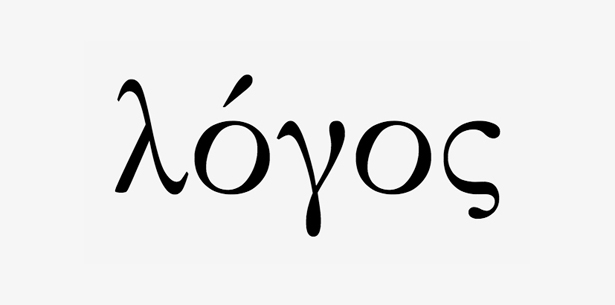

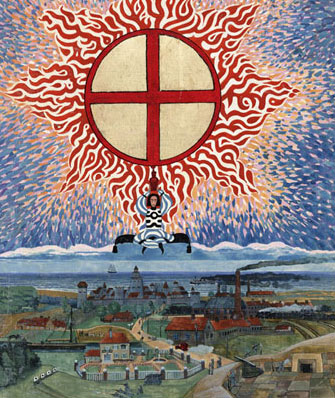

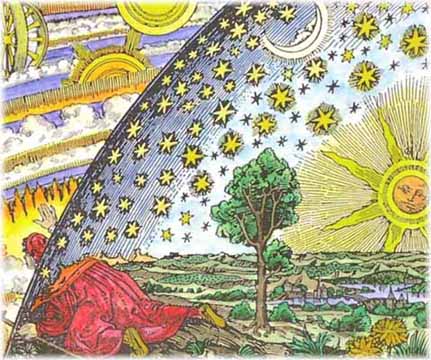
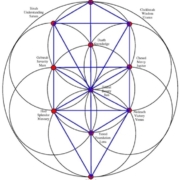

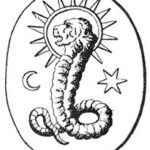
Leave a Reply
Want to join the discussion?Feel free to contribute!